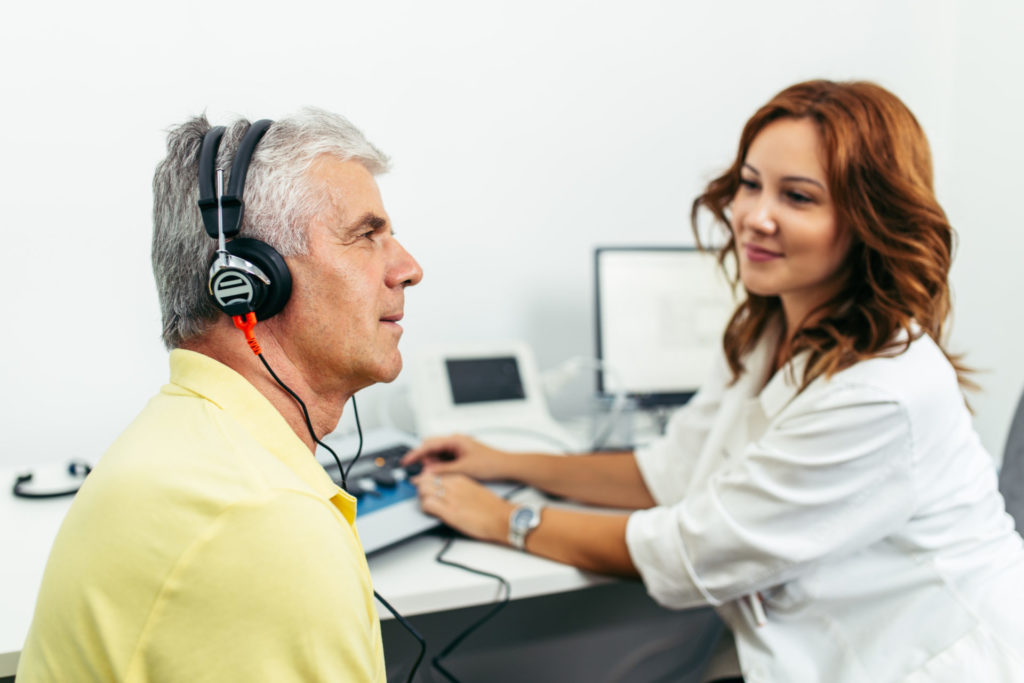A single visit to your audiologist can prevent – or explain – years of frustration and is the best way to get you on the path to better hearing. Hearing Therapy recommend you book an appointment at the first sign of hearing loss.
Our professionals make hearing loss tests quick and painless and we work with you and your needs to ensure you’re delivered the best possible care, whether that be in our Sheffield clinic or using our domiciliary care service in Barnsley.
If you think you need to book an appointment with our audiologists and are wondering what happens during a hearing test, we’re happy to explain it to you!
Why book a hearing test?
Good hearing is an integral part of your overall health and wellbeing and it’s important to seek professional help and advice at the first sign of hearing loss to check your hearing levels and for obstructions or disease of the ear.
Hearing loss can affect many aspects of your life, such as social and work, as well as the time you spend relaxing by watching the television or listening to the radio. But more importantly, it can impact your levels of awareness whilst crossing the road, walking and driving.
Booking a hearing test is quick and simple with Hearing Therapy, and if you need any additional care or support, let us know – we’re here to help.

What happens during a hearing loss test?
To ensure we have a thorough understanding of your hearing history and current health, we start by asking you detailed questions about your medical history related to your ears and hearing.
This helps us gain perspective on how long your hearing has been a problem and the type of sensations and issues you’re experiencing with your ears.
Examining the ears
Once we have an understanding of your medical history regarding your ears and hearing, we’ll begin examining the ear canals using an otoscope.
This allows us to visibly see if there is any reason for your hearing loss, such as a build-up of ear wax, a foreign body and any other obstruction within the ear canal.
This will also give us the opportunity to identify if there is any disease of the external and middle ear.
Testing your hearing capability using Air Conduction
Next, we begin testing your hearing capability by placing sound-isolating headphones over your ears and asking you to press a button each time you hear a sound called a Pure Tone. This test is called Air Conduction.
A Pure Tone is a highly calibrated single frequency tone and can test from 250Hz to 16Khz meaning we have the ability to test a wide range of hearing loss.
Using Bone Conduction to test your hearing
We promise the next step isn’t as invasive as it sounds! The Bone Conduction test is carried out using a purpose-made vibrating headset that allows us to detect where the problem occurs.
This will help us understand whether your hearing problem is rooted in the inner ear, called the cochlea, the middle ear including the eardrum, middle ear bones or both.

Additional tests for hearing loss
Depending on the extent of your hearing loss or the symptoms you’re experiencing, we may also conduct Tympanometry.
Tympanometry uses a Tympanometer to measure the movement of your eardrums and the air pressure behind them. This tells us if your eardrums are working properly.
In-depth hearing loss tests
As well as Tympanometry, we can also offer further testing for a more in-depth analysis of your hearing capacity and ear health. These tests include:
- Acoustic Reflex Testing
- Otoacoustic Emissions
- Speech in Noise Measurements
What happens after your hearing test?
Once our audiologists have determined your hearing capacity and ear health, we’ll work with you to find the right hearing solution for you.
We offer a number of high-tech hearing aid solutions that offer features such as wireless charging, Bluetooth connectivity and can even be invisible to the eye.
Have a browse of our hearing aid range and book your appointment today.
